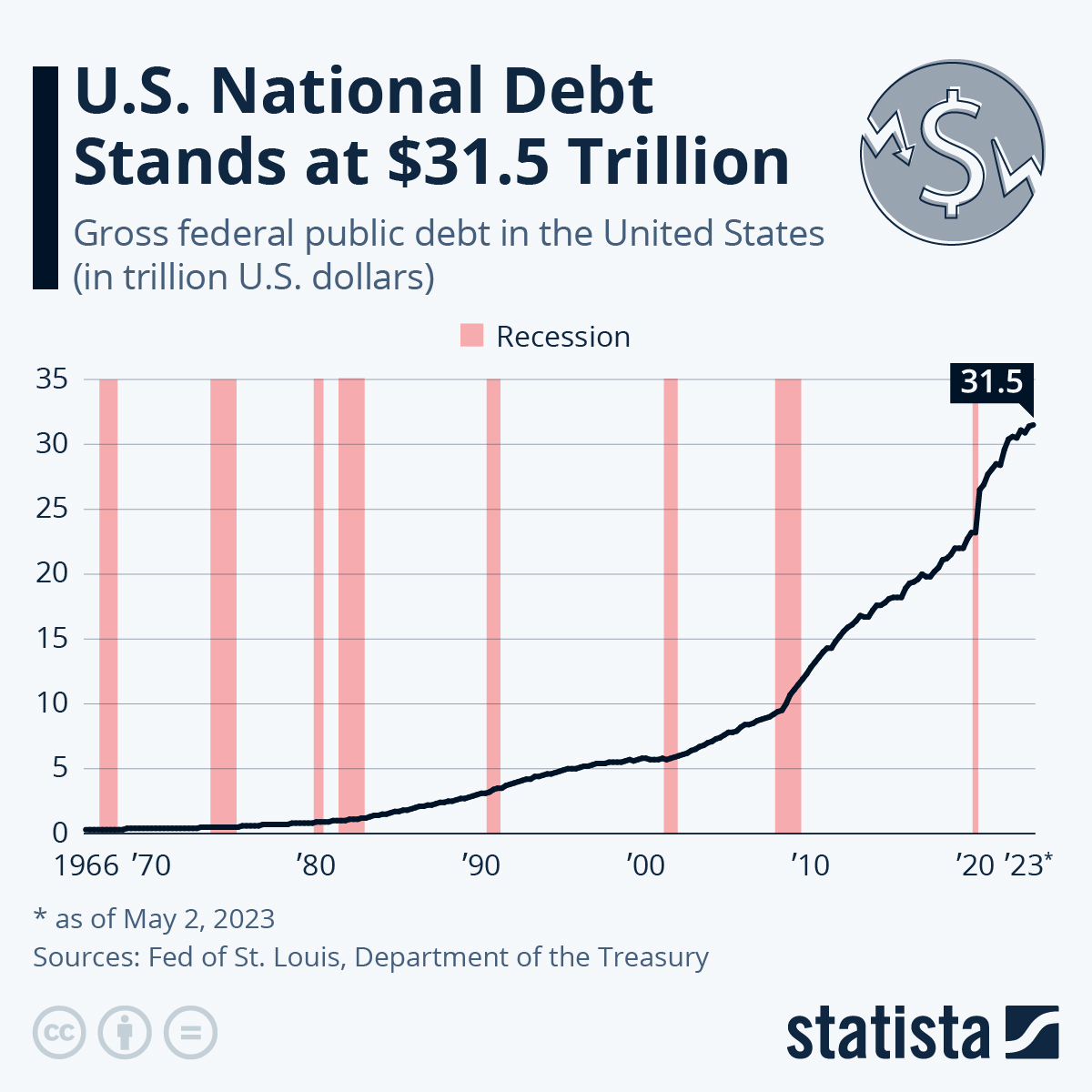U.S. national debt currently stands at around $31.5 trillion, daily reporting from the Department of the Treasury shows. The U.S. officially hit its debt ceiling of $31.4 trillion on January 19. Secretary of the Treasure Janet Yellen has most recently said that financial maneuvering could keep the country open until June 1.
During the coronavirus pandemic, countries all over the world had to mobilize additional resources - mostly through new debt - to help residents and the economy shoulder the extra cost of the crisis. For the U.S., St. Louis Fed data shows national debt jumping up in early 2020 and again during fall and winter 2021/22. The new debt is also financing tax cuts of the Trump era, which are set to run until at least 2025.
When U.S. debt hit $31 trillion for the first time last October, that debt milestone was expected, but - as reported by The New York Times - many feel more uneasy about it now as higher interest rates meant to fight inflation have made borrowing money more costly. As interest rates have been rising quickly, they have the ability to widen the national deficit even more as debt servicing costs are rising, which would in turn lead to the need for even more borrowing.













